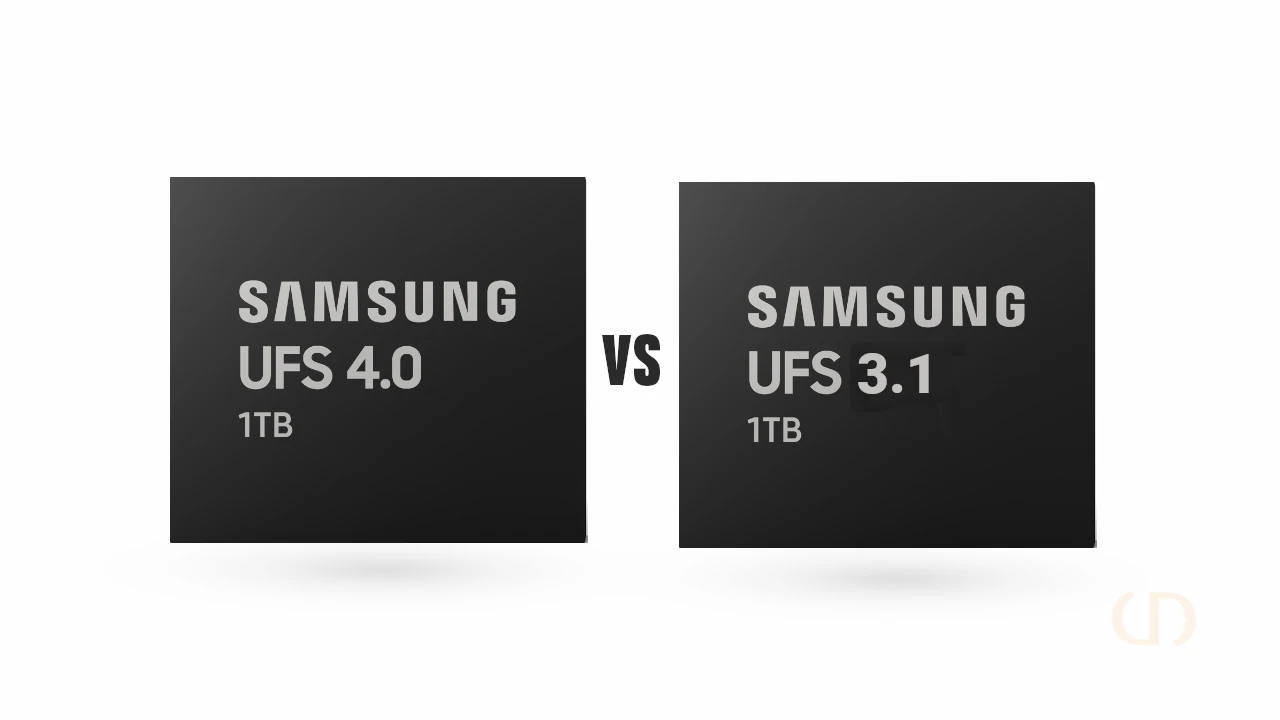UFS 4.0 vs UFS 3.1: Specs comparison.
UFS 4.0 offers a lot of benefits (at least on paper) over the UFS 3.1, however, is it worth spending big on a device with UFS 4.0 or just getting a regular high-end one with UFS 3.1?
One area where technology has been consistent is in advancement and constant development. The recent launch of UFS 4.0 is a good example of how fast and how well this area of development is thriving.
UFS or Universal Flash Storage refers to a type of flash storage that is used for smartphones and PCs. It can either be embedded (eUFS) into the printed circuit board or it can used as a portable removable storage card.
UFS storage replaced eMMC storage as the defacto storage for smartphones and PCs in 2013-2014. It currently has some of the best data transfer, read and write speeds around.
There have been several generations of UFS storage over the years, for UFS 1.0 to UFS 4.0. Each new generation promising to better the performance of its predecessor. In this article, we're going to have the current gen UFS go up against its predecessor from the previous generation. This is UFS 4.0 vs UFS 3.1
UFS 4.0
UFS 4.0 refers to the current generation of UFS storage. It was announced by Samsung in May of 2022. It quickly replaced UFS 3.1 as the defacto storage for flagship smartphones. It is very fast and super reliable. Quite recently, other companies like Micron have made even faster versions of UFS 4.0 for even better performance.
Highlights of UFS 4.0
UFS 4.0
According to Samsung, the UFS 4.0 brings improvements in areas like:
Positives
- Samsung’s 7th Generation V-NAND memory and proprietary controller.
- 4200mbps sequential read speed.
- 2800mbps sequential write speed
- It is 2x faster (read and write speeds) than the older UFS 3.1
Negatives
- It greatly increases the cost of its host device
UFS 3.1
UFS 3.1 refers to the last generation of UFS storage. It was announced in 2020 and was extremely in the smartphone flagship market. As a matter of fact, it is still very much popular to this day as it is capable of very impressive performance.
Highlights of UFS 3.1
UFS 3.1
UFS 3.1 was launched in February, 2020. Though it is now considered as an old storage solution thanks to the launch of UFS 4.0, UFS 3.1 isn't a bad storage chip, thanks to features like:
Positives
- Performance Throttling Notification: allows the UFS device to notify the host when storage performance is throttled due to high temperature.
- DeepSleep: a new UFS device low power state targeting lower-cost systems that share UFS voltage regulators with other functions.
- Write Booster: an SLC non-volatile cache that amplifies write speed.
- More cost effective than the new UFS 3.1
Negatives
- Old, and less power efficient when compared to UFS 4.0
Conclusion.
There's no contest here, it is simply a landslide win for the UFS 4.0. It has double the read speeds of its predecessor and also quadruple the write speeds (Micron UFS 4.0). When you add in the much higher input and output speeds and memory bandwidth, you can see that it makes a lot more sense to go for a device with a UFS 4.0 storage. These speeds are very beneficial for CPU/gaming performance and the overall fluidity and snappiness of your smartphone.
Original Author: ZesusHVWritter
